Berbere (Ethiopian Spice Blend)
This post may contain affiliate links. See my disclosure policy.
Central to Ethiopian cuisine is Berbere, a fiery hot and fragrant spice blend bursting with flavor. Now you can make your own right at home with my authentic berbere recipe that will bring life, flavor, and some serious kick to your food!
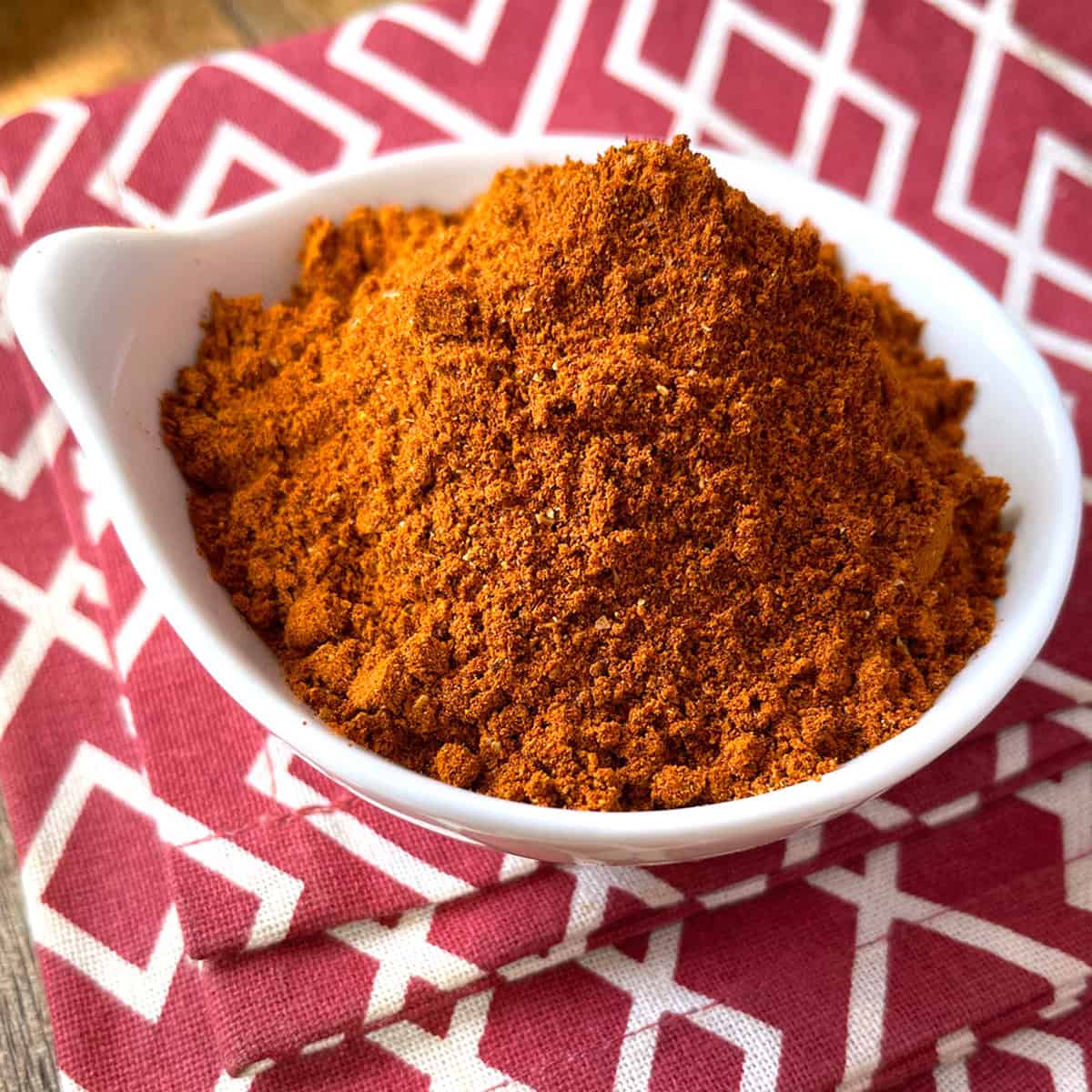
What is Berbere?
Berbere is a bold and fragrant spice blend known for its deep red color and complex flavor and is an integral ingredient in Ethiopian cuisine, most notably Doro Wat, the famous spicy chicken stew. It’s also known for its potent heat and this spice is not for the faint of heart – or taste buds. Every Ethiopian cook has their own version of this blend. Some versions include lesser known spices like nigella seeds, ajwain, and korarima, a spice that grows wild in Ethiopia. Whatever the version, there are several key spices that are common to all and the result is a fiery, bright red, highly aromatic and flavorful seasoning blend. It’s fantastic as a rub for meat, poultry and fish, a seasoning for stews, soups, grains and vegetables (see below for recommendations). Berbere makes a wonderful all-purpose seasoning.
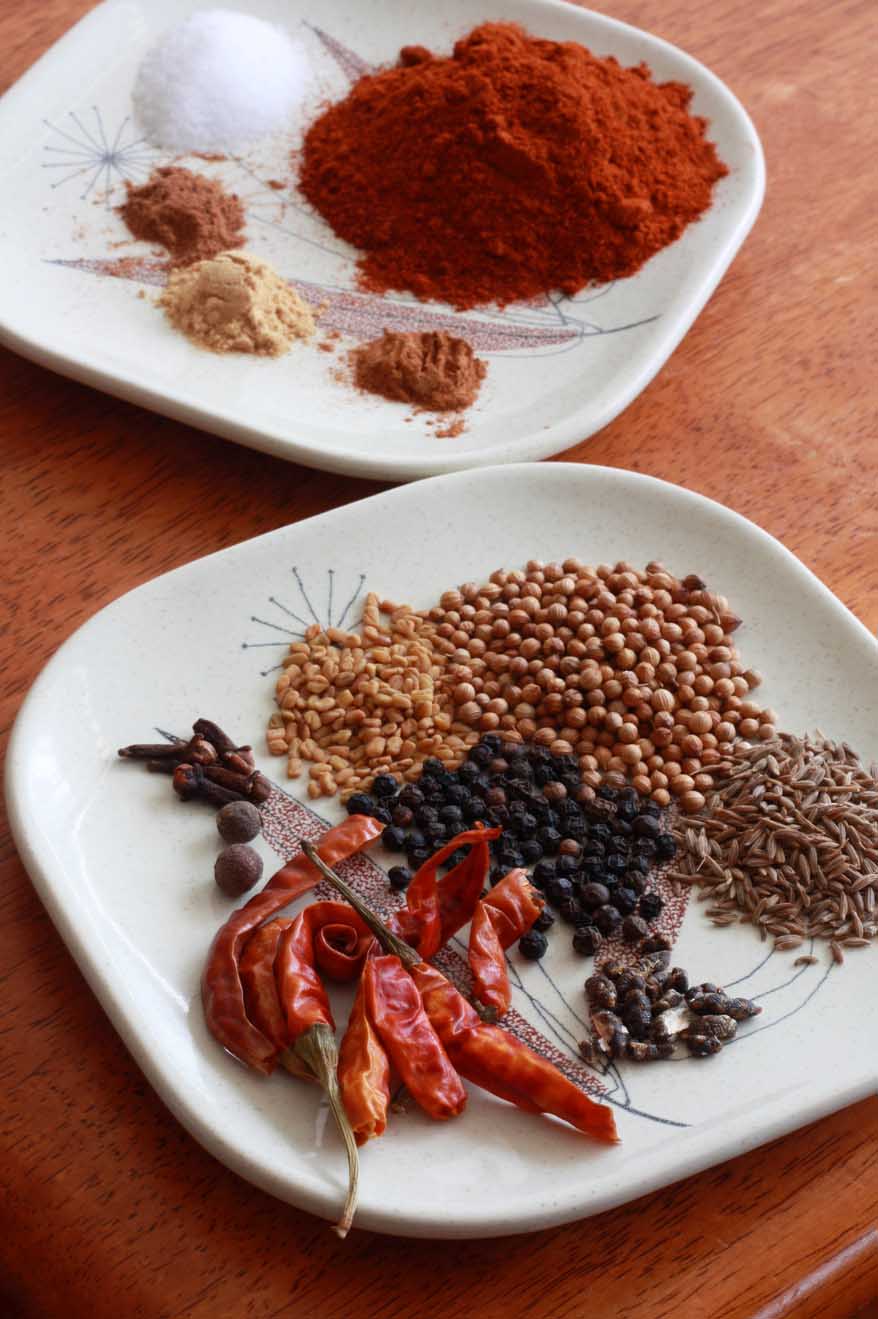
Berbere Ingredients
Berbere is made up of several spices and I strongly recommend using whole spices wherever and whenever possible. The whole spices are toasted, cooled and ground, yielding maximum flavor. If you already have these spices in ground form and don’t want to purchase the whole spices, you can substitute pre-ground. To make berbere you’ll need a combination of pre-ground spices and whole spices that you’ll toast and grind.
For the whole spices you will need:
- Coriander Seeds
- Cumin Seeds
- Green Cardamom Seeds
- Dried Red Chili Peppers
- Whole Allspice Berries
- Whole Cloves
- Fenugreek Seeds
- Black Peppercorns
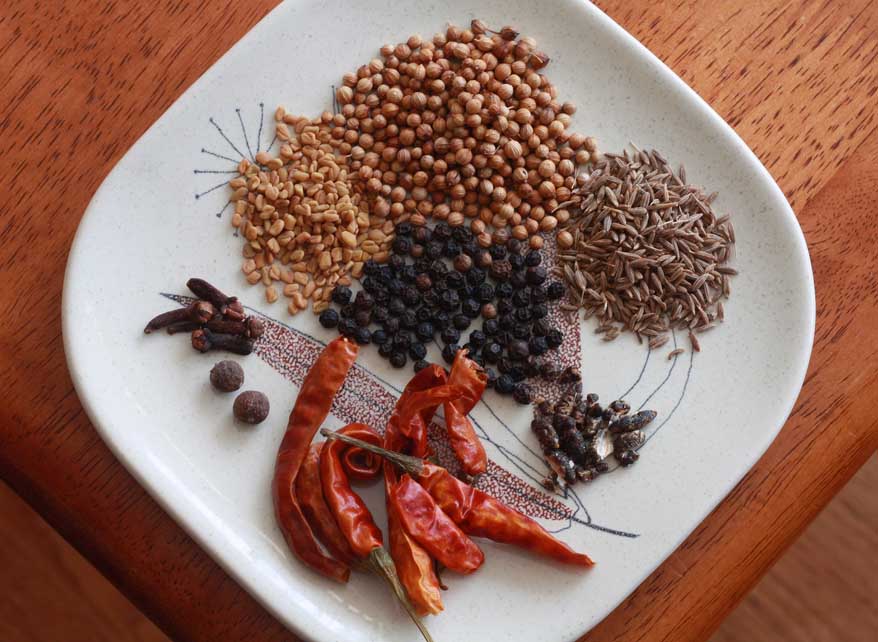
For the ground spices you will need:
- Sweet Paprika
- Ground Cinnamon
- Ground Ginger
- Ground Turmeric
- Ground Nutmeg
- Kosher Salt
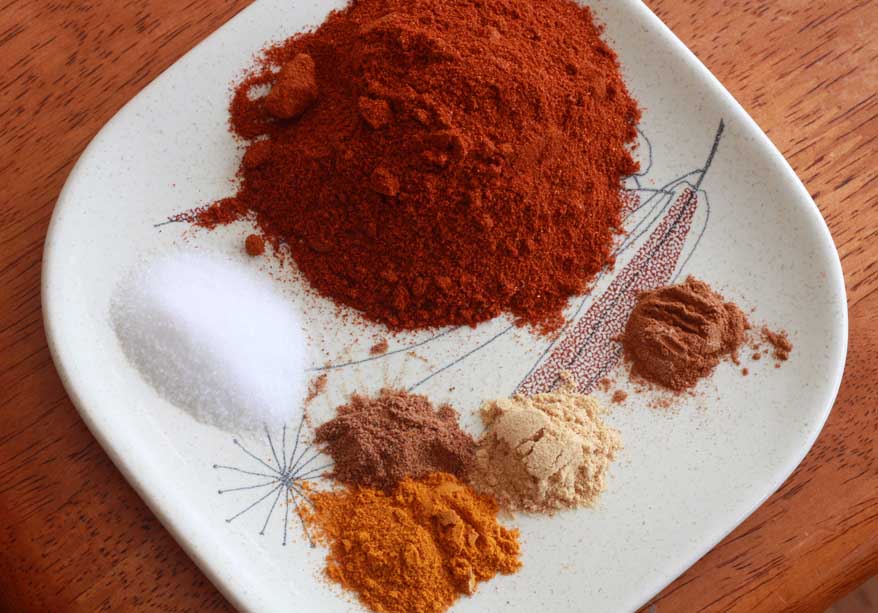
Berbere Recipe
Let’s get started!
First, we’re going to toast the whole spices and red chilies. This releases their natural oils, flavor and aroma. Heat a skillet over high heat and toast the seeds until very fragrant, about 3 minutes. Shake regularly to prevent scorching. Transfer them to a bowl to cool completely.
Note: If you aren’t afraid of extreme heat, leave the membranes and a few of the seeds in while de-seeding the chilies.
Once cooled, grind the whole spices in a spice or coffee grinder.
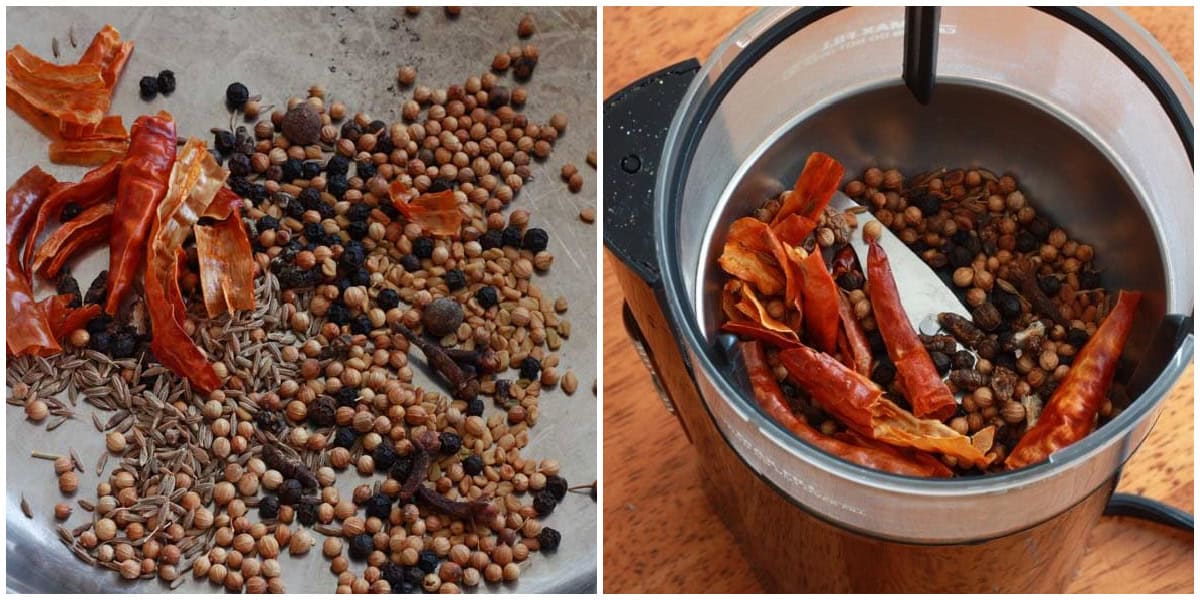
Next, add the powdered spices to the spice/coffee grinder.
Grind all the spices to a powder.
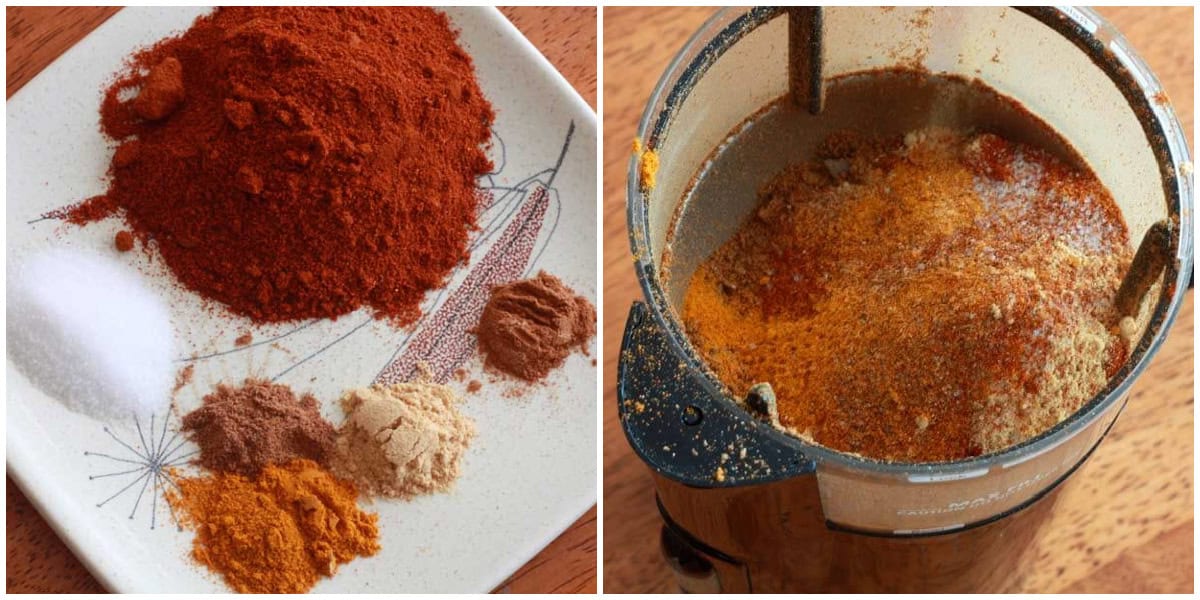
Transfer the blend to a jar with a lid.
Store the Berbere in an airtight jar in a dark, cool place until ready to use. This will keep for several months for maximum flavor use it within 3 months.
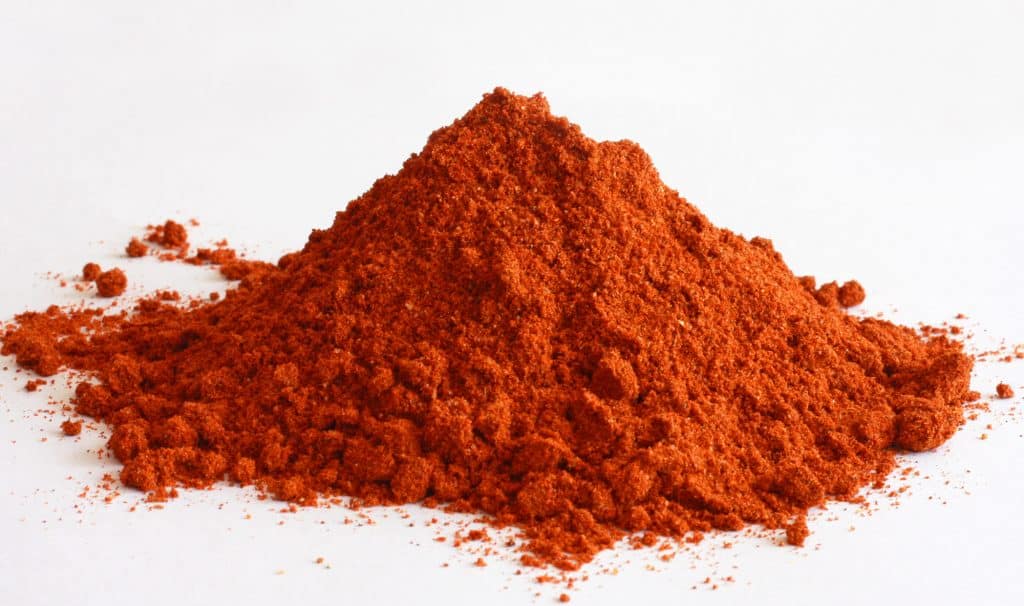
How to Use It
Berbere is a flavorful and fragrant spice blend that can be used in a variety of dishes. Remember, this seasoning blend is very potent and a little goes along way, so start with less and add as desired. Here are just a few ways you can use it:
- Stews and Curries: It’s most famously used in Ethiopian Doro Wat and Sega Wat. It can be used in a variety of stews to give them a flavor boost and some spicy kick.
- Lentils and Beans: Whether lentil or bean soups or salads, berbere really brings legumes to life. It’s classically used in Ethiopia’s famous lentil dish, Misir Wat.
- Vegetables: Just a pinch of it over roasted, grilled or steamed vegetables adds flavor and color.
- Grains: Stir into rice, quinoa or couscous to infuse them with flavor.
- Meat Rub or Marinade: Use it as a dry rub on meats, seafood or poultry before grilling, or combine it with some oil or yogurt to rub onto the meat before cooking.
- Scrambled Eggs and Avocado Toast: It adds the perfect kick and flavor.
- Compound Butter: Like Ethiopia’s famous Niter Kibbeh, Berbere can be added to melted butter and poured into a mold to make a spicy and flavorful compound butter that’s delicious on steaks, poultry, seafood, and vegetables.
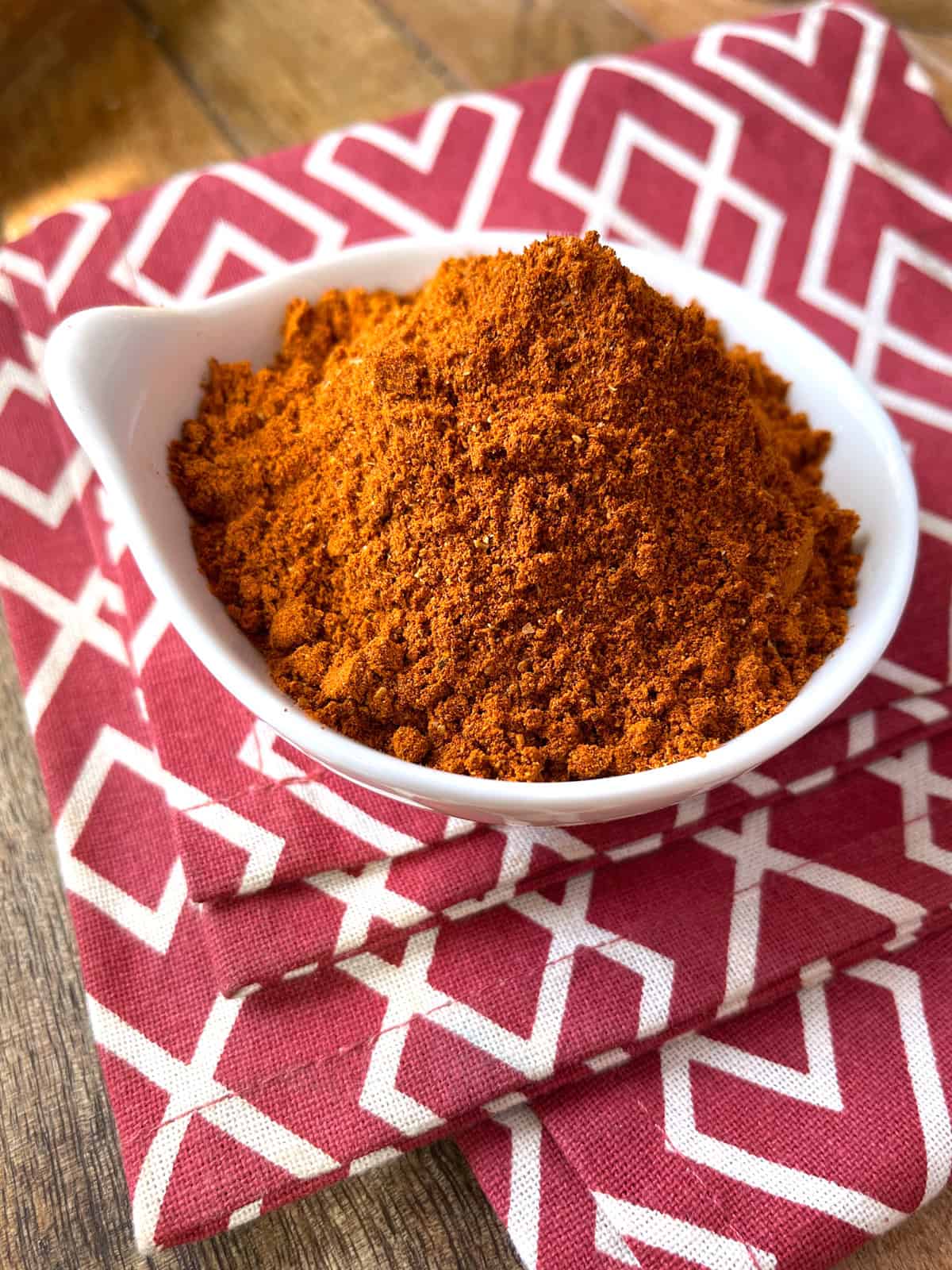
For more delicious seasoning blends from around the world to try my:
Save This Recipe
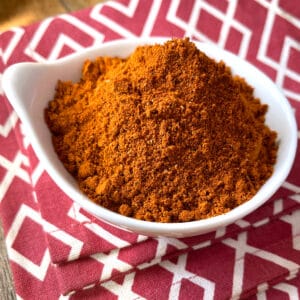
Berbere (Ethiopian Spice Blend)
Equipment
Ingredients
- 2 teaspoons coriander seeds
- 1 teaspoon cumin seeds
- 1/2 teaspoon fenugreek seeds
- 1 teaspoon black peppercorns
- 2 whole allspice berries
- Seeds of 4 green cardamom pods
- 4 cloves
- 5 dried red chilies , seeds and membranes removed and broken into small pieces (see Note)
- 3 tablespoons sweet paprika
- 1 teaspoon turmeric
- 1 teaspoon kosher or sea salt
- 1/2 teaspoon ground ginger
- 1/4 teaspoon nutmeg
- 1/4 teaspoon cinnamon
Instructions
- In a heavy skillet over high heat, toast the whole spices (seeds) and chilies, shaking the pan regularly to prevent scorching, until very fragrant, about 3 minutes. Transfer to a bowl and let cool completely.
- Grind the cooled spices in a spice or coffee grinder. Add all remaining ground spices and salt and grind everything together.Store in an airtight container in a dark, cool place. Will keep for up to 3 months.
Notes
Nutrition
Originally published on The Daring Gourmet August 26, 2013
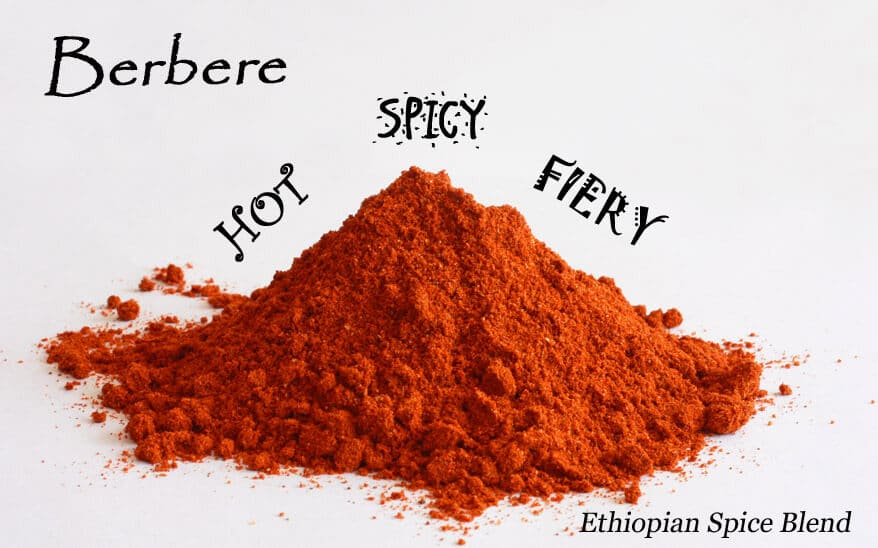



















Followed recipe exactly. Did not find spicy?? just pleasantly warm?
The small, dried red chilies are fiery hot, did you use them and include the seeds and membranes?
Hi Kimberly! I recently made doro wat (using a recipe similar to yours, though I cooked the onions dry before adding the niter kibbeh). I bought the berbere from a local spice shop, and the berbere wasn’t spicy at all! I tried to adjust using pequin and cayenne powders, but the result was still pretty timid. What kind of red chiles did you use for your recipe? I don’t live near an east african import shop, do you have any suggestions that would be available in the US? I have a large number of Mexican and Asian import shops nearby.
Hi Christopher, I’m not sure what the specific name is, but I just use the standard small dried red chilies you can find in any grocery store that carries dried chilies. For example, WinCo carries them in bulk in the produce section next to the larger dried red chili varieties (ie, ancho chilies). You can also find them in any Mexican grocery store and they usually come in small plastic bags in the spice section. They pack some serious heat and one or two of them go a long way. The ones I use are 2-3 inches long and about 1/4-1/2 inch in width. You’ll have no problem finding them in your local Mexican grocery stores.
All Asian food stores carry the small thin red chilis. They use them in a lot of their dishes. I hope this helps.
I can only find cardamom seeds, not the whole pod. How many seeds would you suggest I use? My daughter is half Eritrean and we love the food but no longer live near her relatives who would supply us with injera and other ingredients.
Hi Sally! No problem whatsoever. It will be about 3/4 teaspoon cardamom seeds. Thanks for asking!
This looks amazing! How is berbere pronounced, by the way?
Thanks, superpadrelife! It’s berberē, with a long “e”.
Thank you! I can’t wait to make this. There’s something so soothing about toasting and grinding spices. Beautiful photos, by the way.
So true, Robbie, nothing beats making your own spice blends from whole spices. The flavor is simply out of this world. Thank you! :)
I found your site today via a Buzzfeed post on Ethiopian cuisine, and after taking a look around a little, I’m obsessed! All your recipes look fabulous, and it looks like we have the same taste in food. Yum yum YUM! Good job, Kimberly! So happy to be a new fan/follower. :)
Thanks, Robbie, it’s nice to meet you :) I develop recipes across the board, but ethnic cuisine is my passion. Looking forward to seeing you around!
I like it ..thank you for sharing…I will try to do it by myself
Thank you, Borena! Happy spice blend making!
Will do this recipe . It will be ok to use with tofu or just veggies like potatoes ? I hope so because I’m vegetarian but I love Thiopian foods..yummm!!!
Absolutely, Luna! It’s pretty much a general purpose spice blend. Enjoy!
Hi there, just popped over to let you know that your link to Food on Friday: French Food was featured in my Need Some Inspiration? Series on Carole’s Chatter today. Cheers
That’s fantastic, thank you so much, Carole!!
I LOVE berbere. I made some berbere chops in my blog a few months ago. It’s yummy!
Hi, Christie, thanks for visiting! Absolutely, Berbere is a great rub for meats!